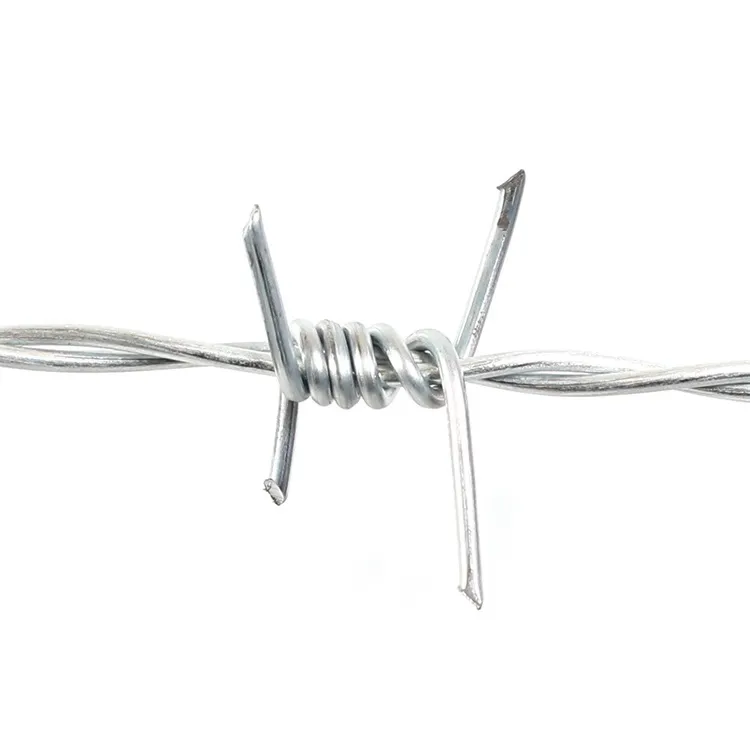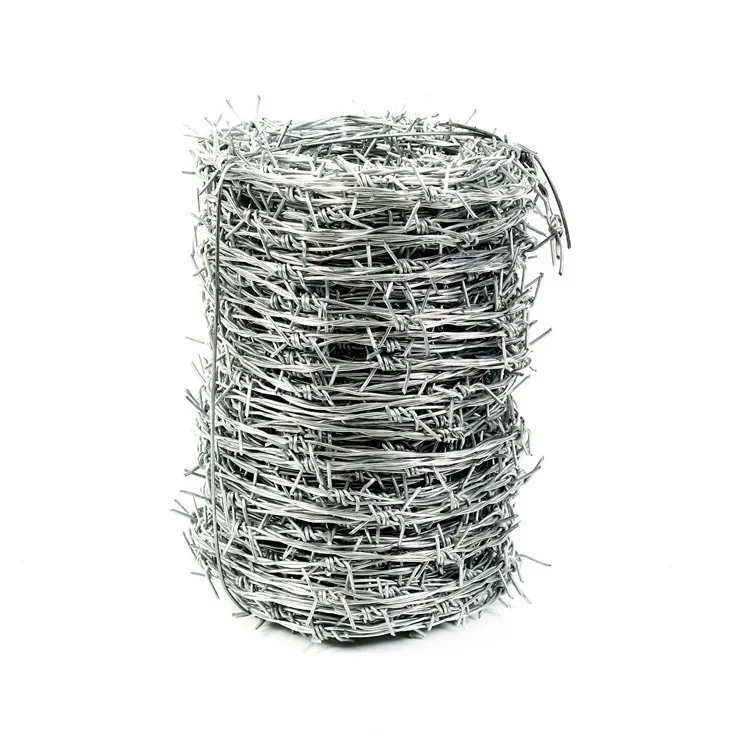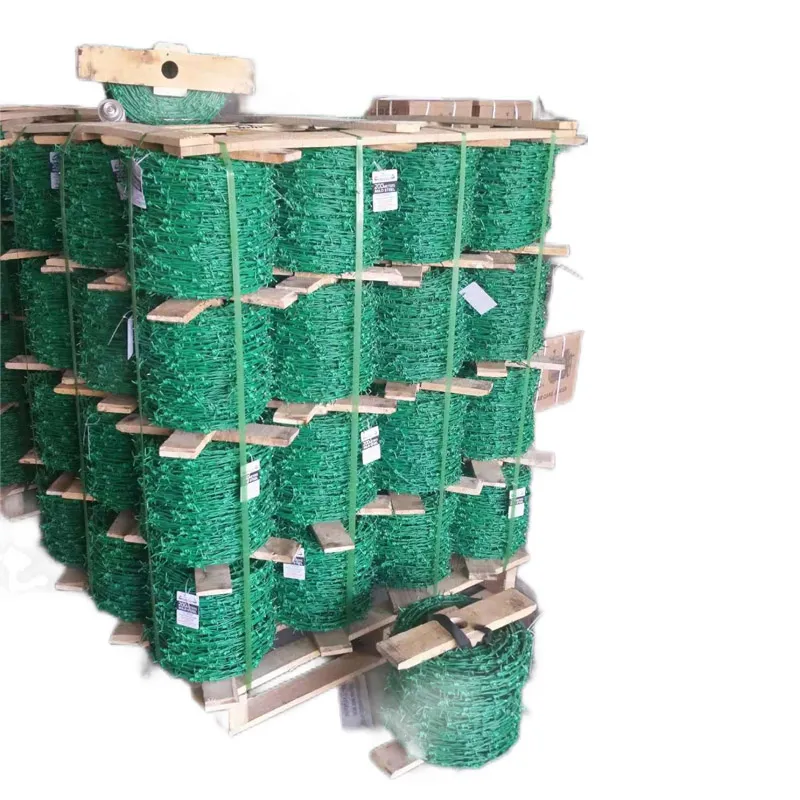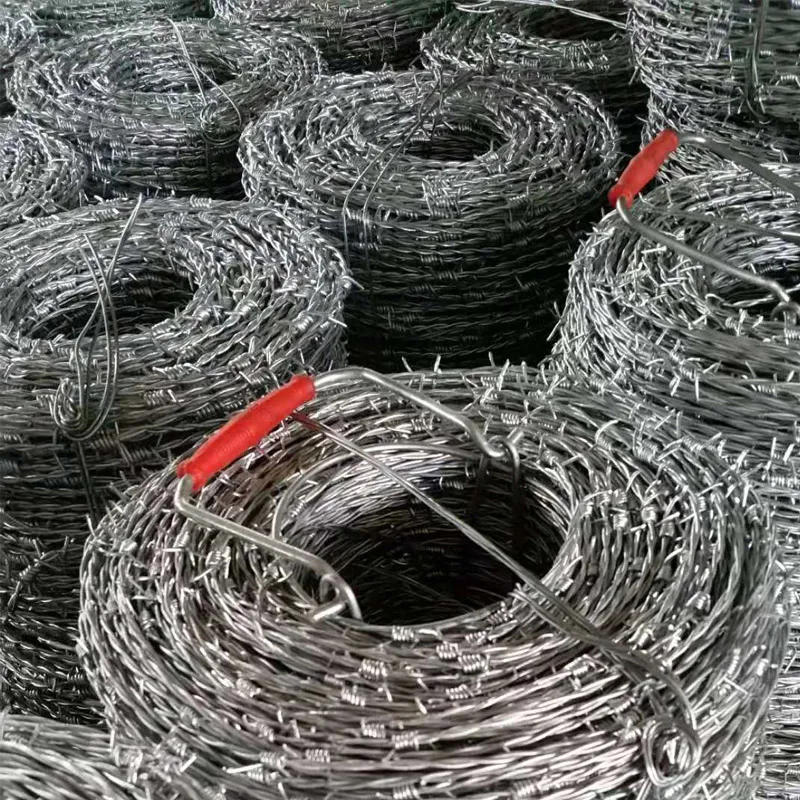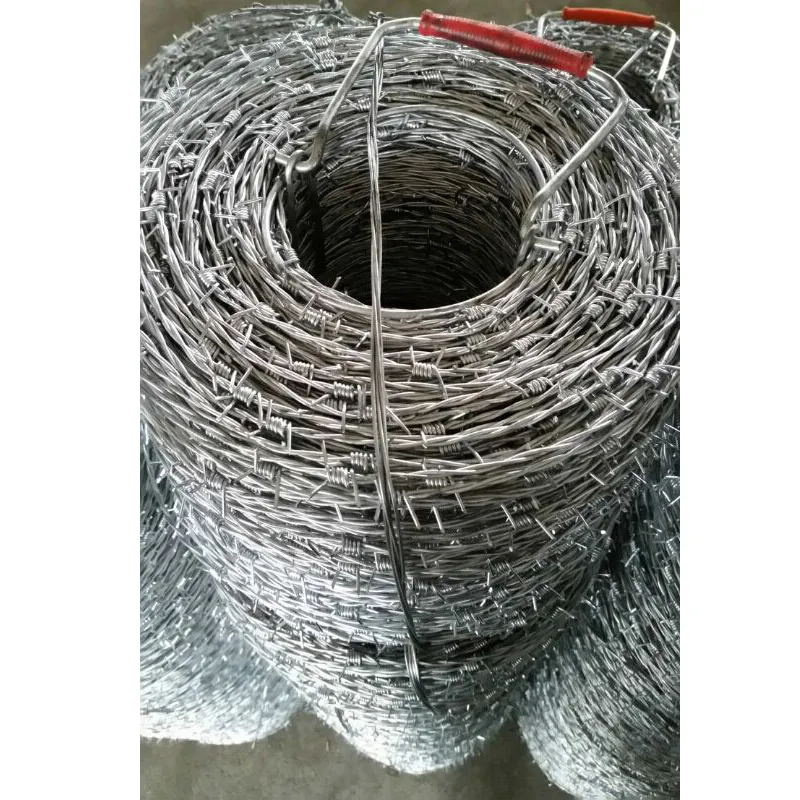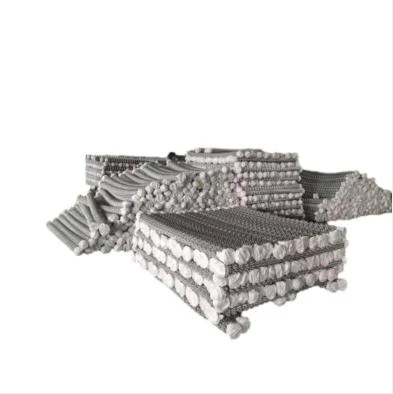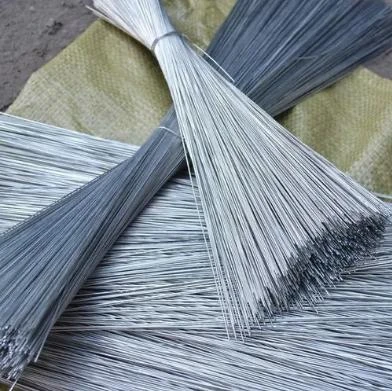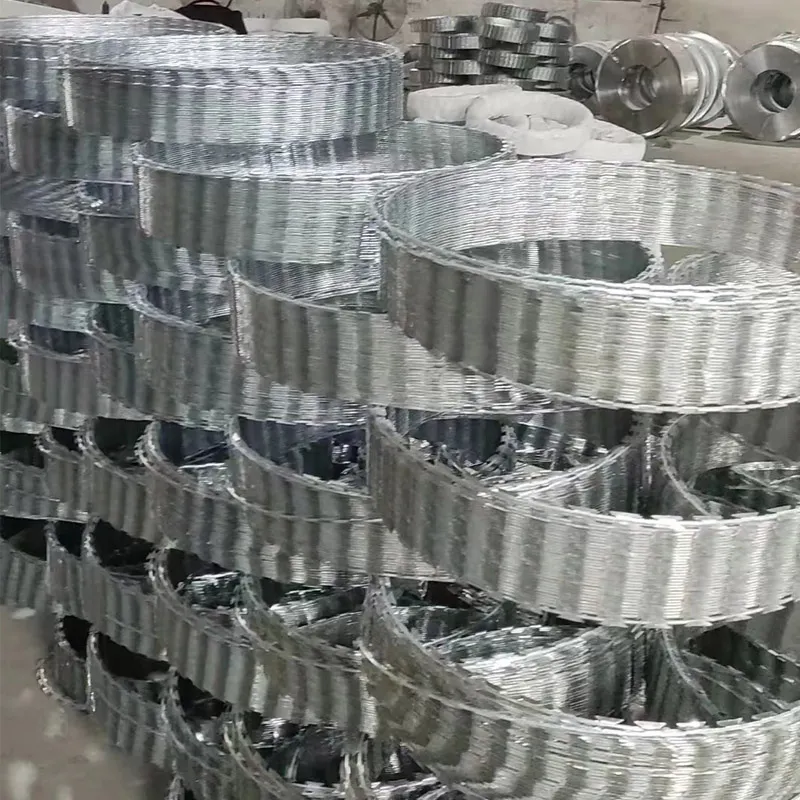Barbed Wire
Three twisting methods of barbed wire: positive twist, reverse twist, forward and reverse twist.
Positive twisting method: Twist two or more iron wires into a double-strand wire rope and then wind the barbed wire around the double-strand wire.
Reverse twisting method: Firstly, the barbed wire is wound on the main wire (that is, a single iron wire), and then an iron wire is twisted and woven with it to form a double-strand barbed wire.
Positive and reverse twisting method: It is to twist and weave in the opposite direction from the place where the barbed wire is wound around the main wire. It's not twisted in one direction.
|
B.W.G |
Thorn distance 3" |
Thorn distance 4" |
Thorn distance 5" |
Thorn distance 6" |
|
12x12 |
6.0617 |
6.7590 |
7.2700 |
7.6376 |
|
12x14 |
7.3335 |
7.9051 |
8.3015 |
8.5741 |
|
12-1/2x12-1/2 |
6.9223 |
7.7190 |
8.3022 |
8.7221 |
|
12-1/2x14 |
8.1096 |
8.814 |
9.2242 |
9.5620 |
|
13x13 |
7.9808 |
8.899 |
9.5721 |
10.0553 |
|
13x14 |
8.8448 |
9.6899 |
10.2923 |
10.7146 |
|
13-1/2x14 |
9.6079 |
10.6134 |
11.4705 |
11.8553 |
|
14x14 |
10.4569 |
11.6590 |
12.5423 |
13.1752 |
|
14-1/2x14-1/2 |
11.9875 |
13.3671 |
14.3781 |
15.1034 |
|
15x15 |
13.8927 |
15.4942 |
16.6666 |
17.5070 |
|
15-1/2x15-1/2 |
15.3491 |
17.1144 |
18.4060 |
19.3386 |
Barbed wire is mostly used for isolation and protection of grassland borders, railways, highways, etc., and for anti-theft in factories, private villas, first floors of residential buildings, construction sites, banks, prisons, banknote printing factories, military bases, bungalows, low walls, etc.


